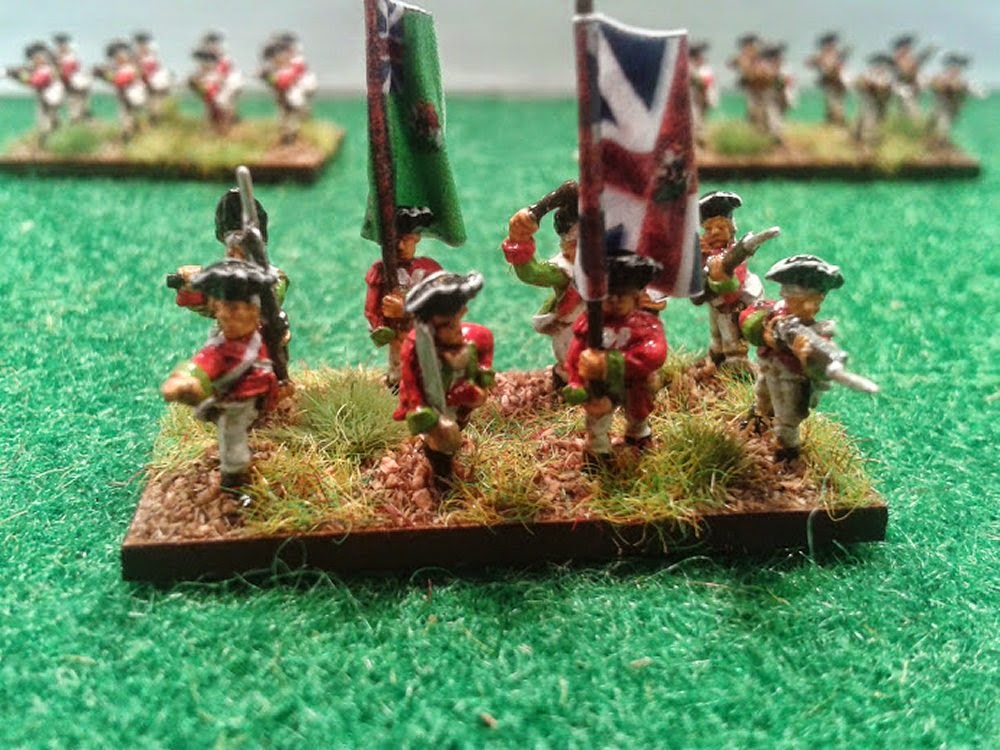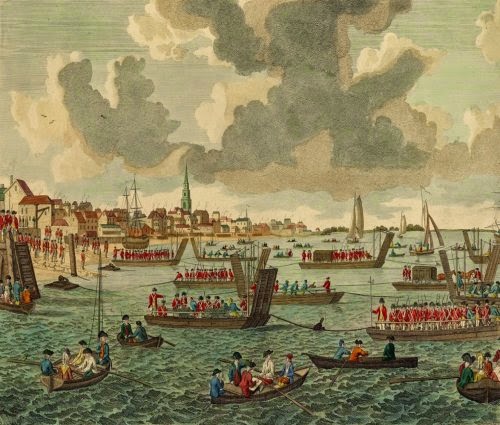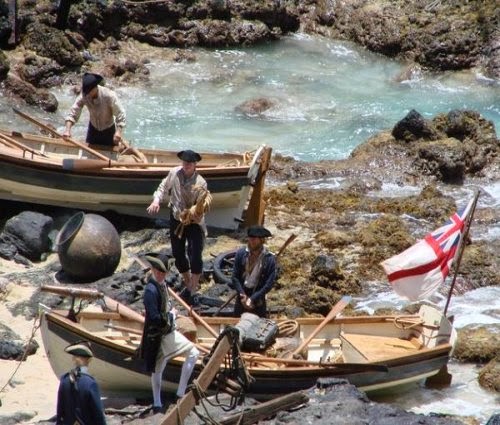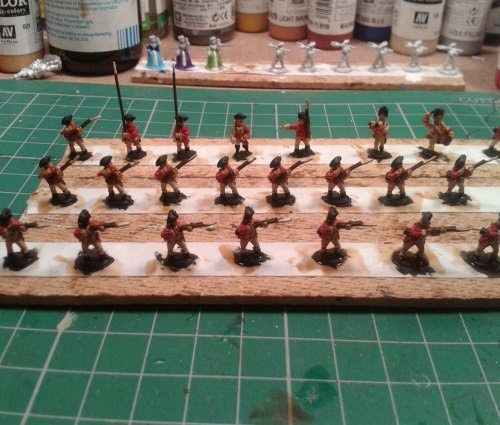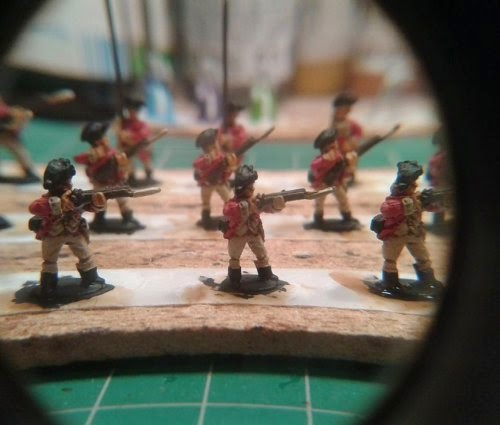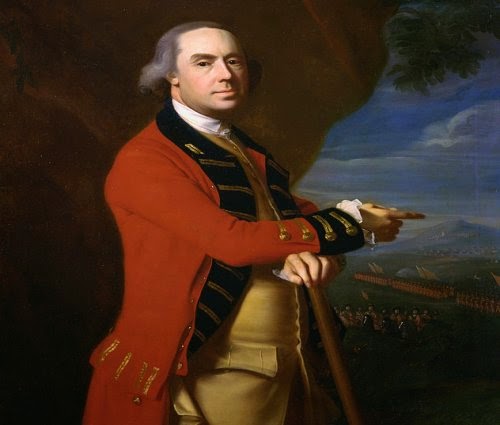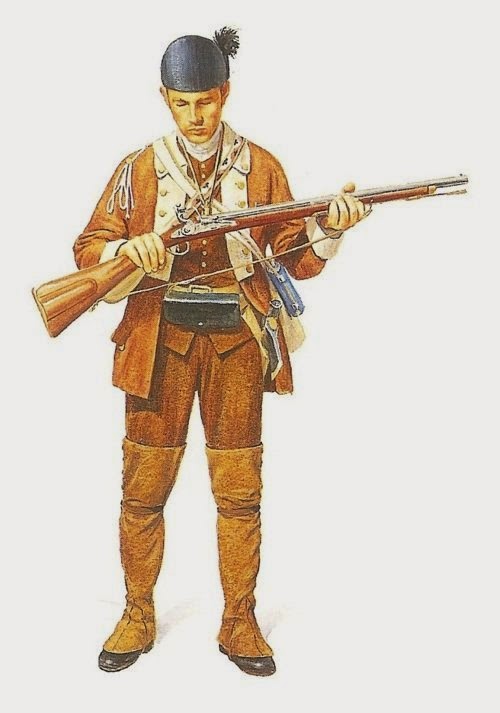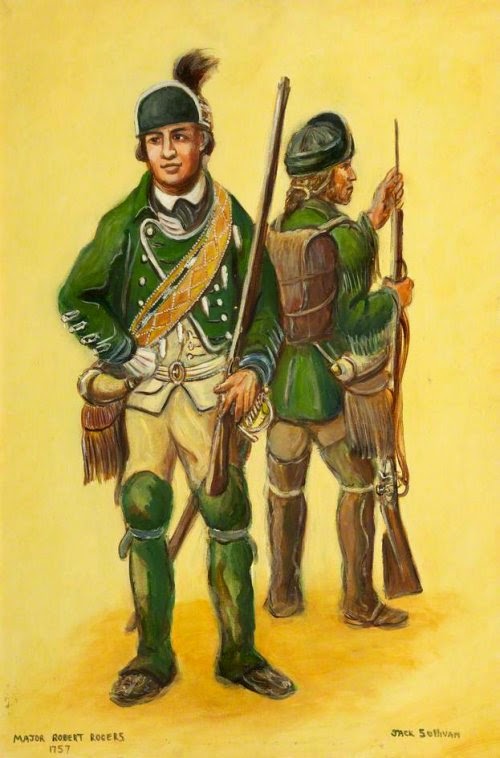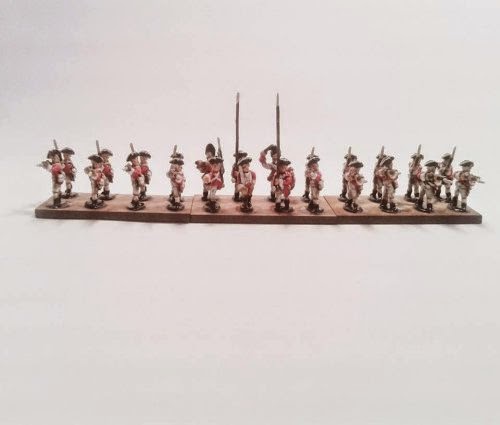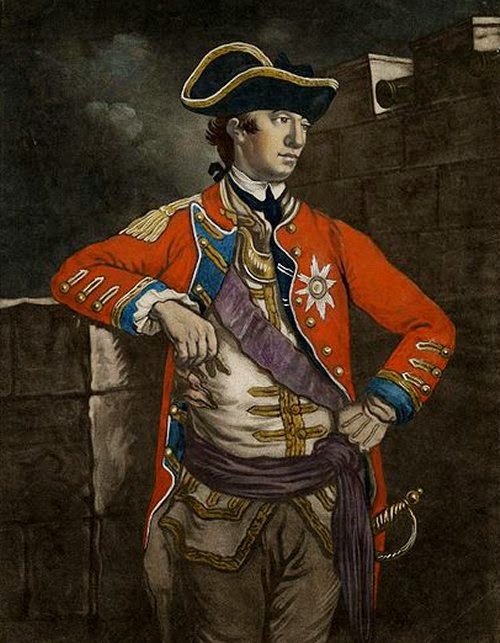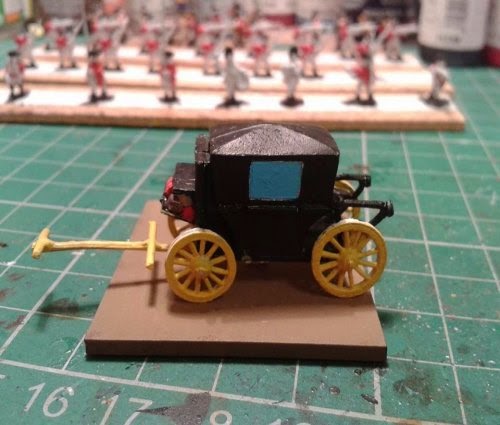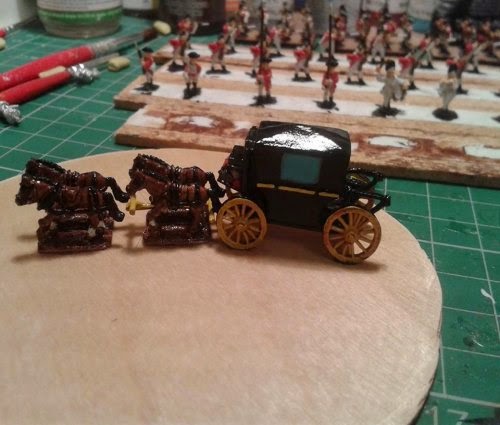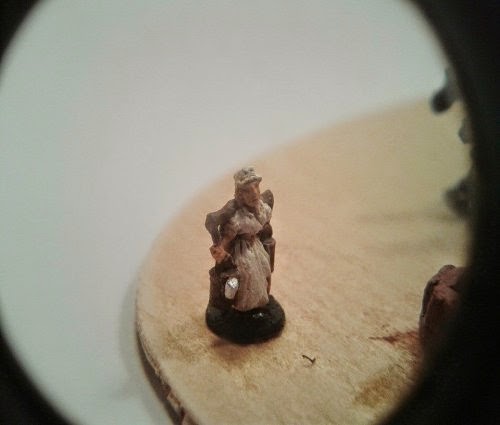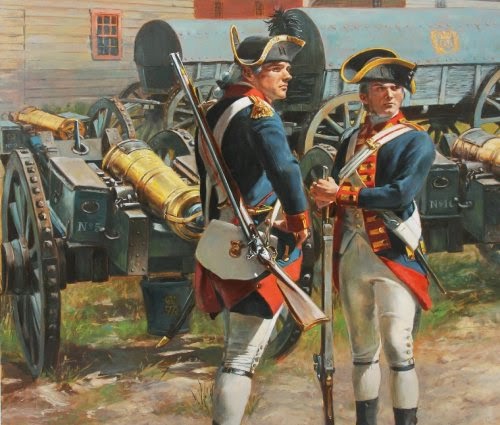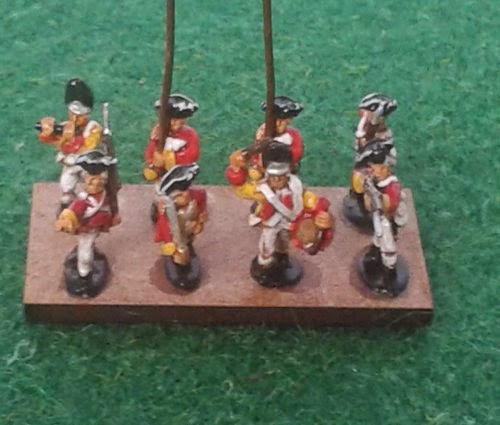American War of Independence
The 5th Regiment of Foot left Monkstown, Ireland on 7 May 1774, for Boston, Massachusetts Bay Colony. Their presence was necessary because of strong civil unrest in the area. Arriving in July, 1774 the 5th Regiment of Foot camped on Boston Common.
On 19 April 1775, the Light Infantry and Grenadier Companies participated in the march to Concord, and the resulting fighting at Lexington, Concord, and the march back to Boston. Casualties were five men killed, three officers and 15 men wounded, and one man captured. On 17 June 1775, after being under siege by American forces for two months, the regiment participated in the attack on the fortifications at Breed's Hill (the Battle of Bunker Hill). The American forces were finally driven off after intense fighting. The regiment was heavily engaged and suffered 24 dead, 137 wounded.
After spending two months on board ship in Halifax, Nova Scotia, the 5th Regiment of Foot sailed to New York to participate in the effort to capture the city from the Americans. They took part in the Battle of Long Island and the Battle of White Plains, the capture of Fort Washington, New York, the capture of Fort Lee, New Jersey. They then spent the winter of 1776-1777 quartered near New York City and were involved in skirmishes with the American forces. They were then part of Howe's campaign to capture Philadelphia, being engaged in the Battle of Brandywine Creek, where they broke the Continental Army's center at Chadds Ford, capturing 5 cannon. On the retreat through New Jersey, on 28 June 1778, the regiment was involved in the fighting at Monmouth Court House. While in New York, the 5th Regiment of Foot participated in several raids and skirmishes, including a raid on Little Egg Harbor, New Jersey. The Americans had been using the harbour for privateering, and this raid succeeded in destroying many buildings and boats.
They then embarked from New York on 3 November 1778, for the French West Indies, landing on 13 December 1778, on the island of Saint Lucia. The 5th Regiment of Foot was engaged with a small force of French and captured a four cannon battery. On 18 December 1778, a force of 9,000 French troops were landed on St. Lucia. The small British force of 1,400 men occupied a hill located on the neck of a peninsula. The French were fairly raw soldiers trained to fight in the classic European style of linear battles. The French advanced on the British force several times. The British, veterans of colonial fighting, inflicted a stinging defeat on the French. The French lost 400 killed and 1100 wounded to the British losses of 10 killed and 130 wounded, which included two officers from the 5th Regiment of Foot. As a result of the defeat, the French force abandoned the island. Regimental tradition states that after the battle men of the 5th Regiment of Foot took white hat plumes from fallen French soldiers and placed them as trophies in their own hats.
After two years in the West Indies, the 5th Regiment of Foot was sent to Ireland in December 1780. They were still in Ireland when hostilities between Great Britain, France, Spain, the Netherlands, and the former Colonies officially ended in 1783.
Kronoskaf
Wikipedia
British Regimental Drums



